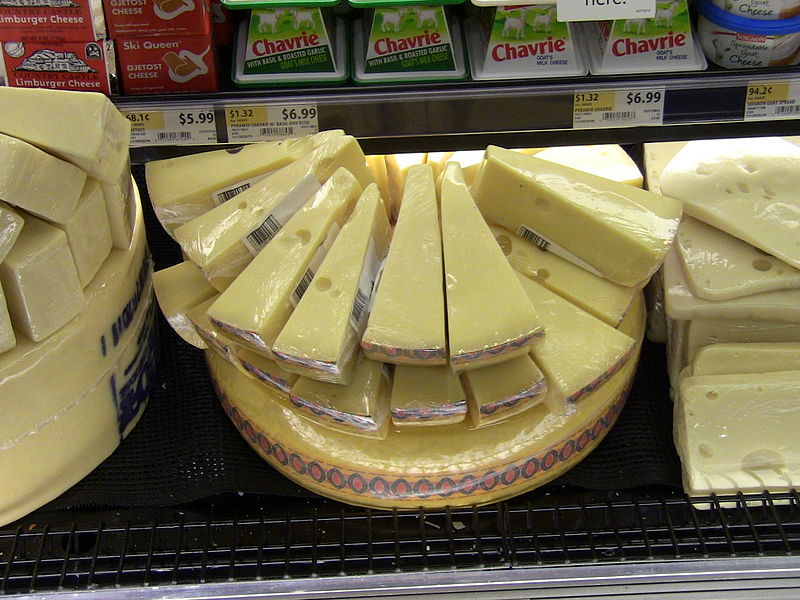Media release
From:
Small daily portion of Jarlsberg cheese may help to stave off bone thinning
Not linked to higher harmful cholesterol either; effects specific to this type of cheese
A small (57 g) daily portion of Jarlsberg cheese may help to stave off bone thinning (osteopenia/osteoporosis) without boosting harmful low density cholesterol, suggest the results of a small comparative clinical trial, published in the open access journal BMJ Nutrition Prevention & Health.
The effects seem to be specific to this type of cheese, the findings indicate.
Jarlsberg is a mild and semi-soft, nutty flavoured cheese made from cow's milk, with regular holes. It originates from Jarlsberg in eastern Norway.
Previous research indicates that it may help boost levels of osteocalcin, a hormone that is associated with strong bones and teeth, but it’s not clear if this effect is specific to Jarlsberg or any type of cheese.
In a bid to find out, the researchers studied 66 healthy women (average age 33; average BMI of 24) who were randomly allocated to adding either a daily 57 g portion of Jarlsberg (41) or 50 g of Camembert cheese (25) to their diet for 6 weeks.
At the end of this period, the group eating Camembert was switched to Jarlsberg for another six weeks.
Jarlsberg and Camembert have similar fat and protein contents, but unlike Camembert, Jarlsberg is rich in vitamin K2, also known as menaquinone (MK), of which there are several varieties.
The short-chained MK-4 is found in animal products such as liver. The long-chained MK-7, MK-8, MK-9 and MK-9(4H) originate from bacteria, and occur in certain fermented foods, such as cheese. Jarlsberg is particularly rich in both MK-9 and MK-9(4H).
Every six weeks blood samples were taken from all the participants to check for key proteins, osteocalcin, and a peptide (PINP) involved in bone turnover. Vitamin K2 and blood fat levels were also measured.
Blood sample analysis showed that the key biochemical markers of bone turnover, including osteocalcin, and vitamin K2 increased significantly after 6 weeks in the Jarlsberg group.
Among those in the Camembert group, levels of PINP remained unchanged while those of the other biochemical markers fell slightly. But they increased significantly after switching to Jarlsberg. PINP levels also increased.
Blood fats increased slightly in both groups after 6 weeks. But levels of total cholesterol and LDL (harmful) cholesterol fell significantly in the Camembert group after they switched to Jarlsberg.
Glycated haemoglobin (HbA1c)---the amount of glucose stuck in red blood cells—fell significantly (by 3%) in the Jarlsberg group, while it rose sharply (by 2%) in those eating Camembert. But after switching to Jarlsberg HbA1c fell significantly in this group too.
Calcium and magnesium fell significantly in the Jarlsberg group but remained unchanged in the Camembert group. After switching cheese, calcium levels dropped in this group too, possibly reflecting increased uptake of these key minerals in bone formation, say the researchers.
“Daily Jarlsberg cheese consumption has a positive effect on osteocalcin, other [markers of bone turnover], glycated haemoglobin and lipids,” write the researchers, concluding that the effects are specific to this cheese.
The bacteria (Proprionebacterium freudenreichii) in Jarlsberg that produces MK-9-(4H) also produces a substance called DHNA, which, experimental studies suggest, might combat bone thinning and increase bone tissue formation, and possibly explain the increase in osteocalcin, they add.
They go on to suggest that Jarlsberg cheese might therefore help to prevent osteopenia—the stage before osteoporosis—as well as metabolic diseases, such as diabetes, although further research would be needed to confirm this, they emphasise.
“This study shows that while calcium and vitamin D are known to be extremely important for bone health, there are other key factors at play, such as vitamin K2, which is perhaps not as well known,” comments Professor Sumantra Ray, Executive Director, NNEdPro Global Centre for Nutrition and Health, which co-owns the journal.
The study also highlights an important research issue, he adds. “Different methods of preparation mean there are key differences in the nutrient composition of cheese which has often been regarded as a homogenous food item in dietary research to date. This needs to be addressed in future studies.”
But he cautions. “As this is a small study in young and healthy people designed to explore novel pathways linking diet and bone health, the results need to be interpreted with great caution as the study participants will not necessarily be representative of other groups. And it shouldn’t be taken as a recommendation to eat a particular type of cheese.”



 International
International



